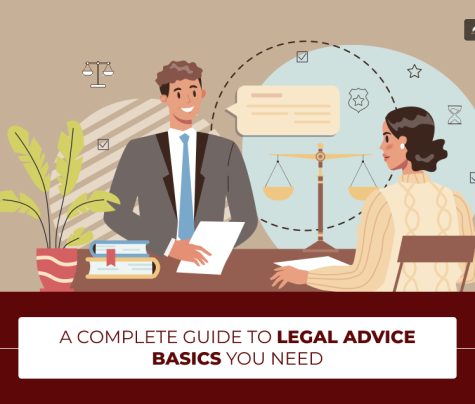
In the realm of women’s health, making informed choices about contraceptive methods is pivotal. Among the array of options available and having in mind that 10,4% of US women choose an IUD, Paragard, a non-hormonal intrauterine device (IUD), has been a popular choice for its durability and effectiveness.
However, recent concerns and ensuing lawsuits have highlighted the importance of understanding the health benefits and the potential legal implications of using such medical devices. This guide aims to navigate the complexities surrounding Paragard, focusing on the criteria for lawsuits linked to its use.
By exploring the intersection of healthcare decisions and legal rights, we underscore the significance of being well-informed and empowering women to make choices that align with their health needs and legal protections.
The unfolding discussion is more than just about contraception; it’s about advocating for safety, accountability, and informed consent in healthcare.
What is Paragard?
Paragard is a non-hormonal IUD that offers long-term contraception for up to 10 years. Unlike its hormonal counterparts, Paragard works by utilizing copper, offering a hormone-free option for those seeking to avoid the side effects often associated with hormonal contraceptives. Its long-term effectiveness and reversibility upon removal have made it a preferred choice for many.
Despite its benefits, Paragard has come under scrutiny due to reports of device breakage during removal and other complications that can lead to serious health issues, including infection, injury to the uterus, and the need for surgical intervention.
These concerns have culminated in lawsuits from affected users, highlighting the need for increased awareness and understanding of the potential risks associated with this contraceptive device. The ensuing legal battles underscore the importance of manufacturer accountability and patient safety in the use of medical devices.
Understanding Eligibility
Paragard lawsuit criteria are primarily contingent upon experiencing adverse outcomes directly attributable to the device, specifically device breakage and complications during removal.
Individuals who have suffered severe pain, infections, or organ damage or were necessitated to undergo surgical interventions due to the device’s malfunction are potentially eligible for legal action.
These criteria underscore the gravity of some users’ issues, highlighting the need for accountability from the manufacturers. Legal recourse aims to provide affected individuals with a platform to seek compensation for their injuries, medical expenses, and related suffering. Determining eligibility involves thoroughly reviewing medical records and expert testimonies and understanding the device’s impact on the patient’s health.
This meticulous approach ensures that those significantly impacted by Paragard’s adverse effects can pursue justice and compensation. By delineating these criteria, potential claimants can better understand their rights and the legal pathways available to them, fostering a more informed and empowered stance in navigating their health and legal options.
The Significance of Medical Device Safety
The issues surrounding Paragard serve as a poignant reminder of the broader concerns regarding medical device safety and the mechanisms in place to safeguard patient welfare. Medical device manufacturing, approval, and post-market surveillance are governed by a complex framework involving various regulatory bodies, notably the FDA in the United States.
This regulatory oversight ensures that medical devices meet stringent safety and efficacy standards before reaching the public. However, the Paragard lawsuits highlight potential gaps in this system, particularly in post-market monitoring and the swift addressing of emerging safety concerns.
The discourse on medical device safety is multifaceted, involving the responsibilities of manufacturers to conduct rigorous testing and reporting, healthcare providers to inform and monitor patients adequately, and regulatory agencies to enforce compliance and protect public health. It emphasizes the need for a proactive, transparent, and responsive healthcare ecosystem that prioritizes patient safety.
As consumers and patients, understanding the safety profiles of medical devices and the regulatory landscape helps make informed healthcare decisions, advocate for safer medical technologies, and hold responsible parties accountable for lapses in device safety and patient care.
How to Navigate a Paragard Lawsuit
Navigating a Paragard lawsuit begins with recognizing the signs that you may be eligible for legal action—specifically, adverse effects stemming from device breakage or removal complications. The initial step involves consulting with a legal professional experienced in medical device litigation.
This expert can offer a preliminary evaluation of your case based on the specifics of your experience and medical history. Essential to this process is gathering comprehensive medical documentation that details your use of Paragard, any related complications, and the subsequent medical treatment received.
Legal professionals will guide you through the complexities of the lawsuit, including filing a claim, navigating pre-trial procedures, and, if necessary, proceeding to trial. Armed with the right information and legal support, affected individuals can confidently pursue justice and compensation for the physical and mental health issues they’ve endured.
In Conclusion
This guide has traversed the critical aspects of understanding Paragard lawsuit criteria, underscored the paramount importance of medical device safety, and illuminated the role of patient advocacy and legal rights. Navigating the legal landscape surrounding lawsuits requires informed decision-making and proactive health management.
As we conclude, remember the significance of being well-informed about contraceptive choices and the legal protections in place. Empowerment comes from knowledge, and in health and legal rights matters, being proactive and consulting with legal professionals can ensure your welfare is safeguarded and your voice is heard.
Read Also:
- How To Become A Lawyer
- How to File for Divorce and What to Keep in Mind?
- Top 15 Best Law Firms in Virginia in 2024











2 Reply
temp mail
March 1, 2024 at 6:23 am
I've read several just right stuff here. Certainly price bookmarking for revisiting. I wonder how a lot effort you place to create this kind of great informative website.
Replytemp mail
March 1, 2024 at 4:35 am
I have been browsing online more than three hours today, yet I never found any interesting article like yours. It is pretty worth enough for me. In my view, if all website owners and bloggers made good content as you did, the internet will be a lot more useful than ever before.
Reply